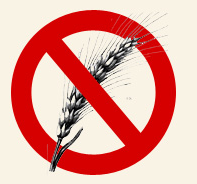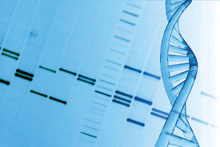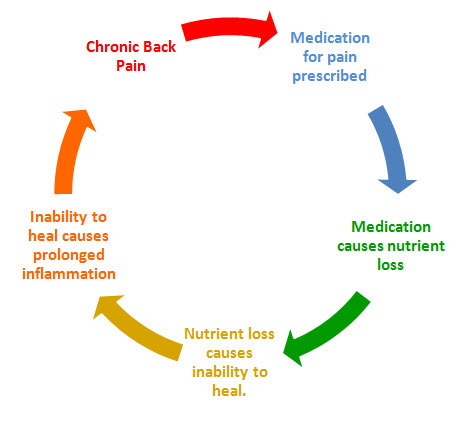NOTE: The following condensed illustrates various far-reaching, comprehensive research studies pertaining to the top 10 antioxidant and nutrient rich foods that help reduce sciatica and back pain.
EXECUTIVE SUMMARY:
Research indicates that diet and nutrition are fundamental to our existence and the quality of that existence. Diet has a cumulative effect on our bodies—to fuel it or harm it. Bad nutrition leads to conditions such as obesity, osteoarthritis, osteoporosis, sciatica and additional chronic pain. Empowering yourself with the facts and utilizing a proper nutritional balance will help to strengthen muscles and tissues awhile shedding unnecessary weight that contributes to a large majority of sciatica and back pain.
BACKGROUND:
Eating the right food is key to maintaining optimum health. Over 9000 scientific studies have been conducted to document the effects of different types of food on our health and the conclusion that food is actually our best medicine! According to Jean Carper, a best selling author and contributing editor to USA Weekend health section, science has proven that the top ten foods make you healthier and help you live longer. Natural substances may also fight nerve damage.
A Johns Hopkins animal study suggests that a protective natural substance reduces pinched nerve damage and speeds recovery of the injured nerves. The finding may help to develop a treatment for sciatica and other common nerve injuries in people. The sciatic nerve, the body’s largest nerve, was compressed in a large group of rats to stop most of the blood flow through the nerve. The study’s results showed the nerve suffered less damage and recovered faster in those animals given an antioxidant called deferoxamine. Antioxidants protect the body against oxygen containing molecules called free-radicals, which damage tissues. Stopping blood flow to tissues causes’ damage, but restoring blood flow unleashes a flood of oxygen that can cause further damage. The results are published in the April 5 issue of Annals of Plastic Surgery.
These findings suggest that this antioxidant protects the nerve from injury when blood circulation stops and restarts and yields a quick recovery from peripheral nerve compression injury,” says Kyle D. Bickel, a study co-author and an assistant professor of plastic surgery and orthopedic surgery. The Hopkins team tested the nerve tissue, in part, for malondialdehyde, a potentially damaging oxygen molecule that the scientists recently found to be a reliable indicator of tissue damage and recovery. Deferoxamine has been shown to reduce damage from blood flow stopping and restarting in other organs, including the heart, skeletal muscle and spinal cord.
This study is believed to be the first time that deferoxamine has been shown to protect a peripheral nerve or a nerve that connects the brain or spinal cord to distant parts of the body. Sudden or long-term compression of peripheral nerves in humans often is caused by slipped discs, fractures, dislocations, tumors and clots and other problems.
CONCLUSION:
Consuming nutrient rich antioxidant foods help strengthen and heal sciatica and back pain associated with muscles, nerves and weight.
Antioxidants help prevent sciatica and back pain associated with muscle and nerves and weight, heart disease and cancer, reduce blood pressure and slow the effects of aging. These naturally occurring compounds protect the body from harmful, excess free radicals, sweeping them up before they can cause damage. And the best way to lay an antioxidant-rich foundation that’s inhospitable to toxins and free radicals is through a combination of whole foods rich in antioxidants: Berries, Broccoli, Tomatoes, Red Grapes, Garlic, Spinach, Tea-Green or Black, Carrots, Soy and Whole Grains.
Choose several daily servings of fresh fruit and vegetables rich in antioxidants and phytonutrients. Calcium and magnesium rich foods help to build strong spinal columns. Avoid Saturated and Trans fats found in fast, fried foods. Instead eat more omega 3 fats from flax products, walnuts and small ocean fish for healthy spinal joints. Choose high quality protein foods. Avoid refined sweets. Eating in a relaxed atmosphere enhances digestion and assimilation of nutrients.
Twenty-four hundred years ago, Hippocrates, the “father of modern medicine” said, “Let food be your medicine and let medicine be your food.” Today, there is overwhelming scientific evidence to suggest that Hippocrates was right on the mark!
 Foods That Heal Back Pain
Foods That Heal Back Pain
Common sense and scientific research indicates that diet and nutrition are fundamental to our health and vitality. Dietary choices have both the ability to harm as well as to nourish the body. Bad nutrition leads to conditions such as obesity, osteoarthritis, osteoporosis, sciatica and as well as chronic pain syndromes. Empowering yourself with the facts and maintaining proper nutritional balance helps to strengthen muscles, tendons, ligaments, and joints while shedding unnecessary weight that contributes to a large majority of sciatica and back pain.
- Pineapple – Pineapple contains a host of very powerful antiinflammatory enzymes that help the body heal. When choosing this food make sure you buy it fresh. The natural enzymes are not present in canned pineapple. Make sure you buy organic. Chemical pesticides can reduce the nutrient value of the food and contribute to chronic disease.
- Berries – Strawberries, raspberries, blue berries, acai berries, cranberries, and blackberries contain powerful phytonutrient antioxidants that help the body control inflammation and enhance the immune systems ability to aid in healing. Make sure you are buying organic to avoid chemical residues and pesticides.
- Green Tea – green tea contains several types of flavonoids and polyphenols that act as antioxidants. Green tea helps the body to detoxify toxic compounds. This process helps your cells protect the DNA from free radical damage. Drink 2-3 glasses of tea daily to achieve a therapeutic effect.
- Beef – Yes you read that correctly! Beef has had a bad rap because of saturated fats. You must understand that not all beef is created equally. Corn fed beef (which is what most people buy in the grocery store) is very high in saturated fat and toxic chemicals. Cows on feed lots typically eat chemically laden corn. How can you expect to get healthy when eating such an unhealthy animal. Look for Grass Fed Beef. When grass fed, beef is very healthy, contains very little saturated fat, and is rich in nutrients. Grass fed beef is rich in CLA, a powerful fat that helps the body metabolize fat and lose weight. I recommend getting grass fed beef from here.
- Tumeric – is a natural spice commonly used in Eastern cuisine. It contains a very powerful anti-inflammatory compound called curcumin. Liberal use of this spice in cooking can be of great benefit for those with chronic pain. The anti-inflammatory and pain reducing effects of curcumin have been well studied making this natural compound one of natures strongest aids for pain.
- Garlic – This powerful allium vegetable provides strong antiinflammatory compounds. Garlic has been wildly researched to help lower blood pressure, cholesterol, reduce the risk of cancer, and improve lymphatic flow. Using garlic liberally when cooking will provide your body with great benefit.
- Ginger – Ginger is a root that has traditionally been used to help relieve nausea, indigestion, and heart irregularities. It has been well researched and is a powerful antiinflammatory food. It works by blocking the enzyme cyclo oxygenase (COX). This is the same mechanism of action as commonly prescribed pain medications use.
- Cold Water Fish – This type of fish is rich in omega 3 fatty acids. New research shows that the use of EPA and DHA (natural compounds found in fish) reduces pain and inflammation more effectively than prescription NSAID pain medications. Because of polluted waters, these fish can be high in toxic metals like mercury. That is why I recommend Omega Heal as a dietary supplement or get your fish from here. This company tests their fish for toxins before selling them.
- Water – 66% of your body is composed of water. Even low grade chronic dehydration can contribute to a sluggish metabolism and cause a number of problems. Lack of water contributes to chronic muscle spasm, and increased blood viscosity. Both contribute to poor healing and inflammation. As a general rule of thumb, you should drink enough water so that you are having to urinate at least 3-4 times per day.
Twenty-four hundred years ago, Hippocrates, the “father of modern medicine” said, “Let food be your medicine and let medicine be your food.”
Modern medicine today would have you believe that pills with foreign chemicals should be your medicine. Don’t underestimate the power of food to help you heal.













